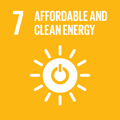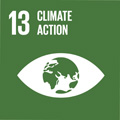- Docente: Michele D'Ostuni
- Credits: 4
- SSD: ICAR/12
- Language: Italian
- Teaching Mode: Traditional lectures
- Campus: Cesena
- Corso: Single cycle degree programme (LMCU) in Architecture (cod. 9265)
-
from Oct 02, 2024 to Dec 11, 2024
Learning outcomes
At the end of the module, the student is able to delve into aspects of sustainability, environmental comfort, lighting engineering and acoustics in interior spaces with a view to economic and managerial efficiency and rationality.
Course contents
Housing is the field of investigation and argumentation of the course. Specifically, civilian housing, especially through the renovation and conversion of the existing building stock, is a field of application of professional activity that stands out as one of the subjects of most widespread opportunity for new graduates in architecture.
The fourth year is a year of advanced maturation in the awareness of the diverse knowledge that converges in the design discipline. Through the interaction of the disciplines of architectural composition and technology, the course aims to stimulate a synthesis of such knowledge by applying it to the small scale of the dwelling and reversing the point of observation of architectural form so that the focus is on space as a hollow form.
Through an examination of traditional housing forms and those developed during the twentieth century, it will come to condense the idea of appropriateness and comfort of space and the different gradations of mediation between private interior space and public exterior space.
The close collaboration with the Interior Architecture module, will determine a unity of objectives, while highlighting the specificities of the two contributions.
To this end, during the course we will illustrate how technological innovations and constructive experiments that have intervened in transformations of ways of thinking about domestic space throughout the 20th century and to the present day have conditioned forms of living through revolutions and rethinking.
Readings/Bibliography
Josifovic, I. & de Graaff, J. Urban Jungle: Living and Styling with Plants. Callwey Verlag, Munich, 2016 .
Bradshaw, V. (2010). The building environment: Active and passive control systems. John Wiley & Sons.P.Scheerbart.
Tucci, F. (2018). Costruire e abitare green. Approcci, strategie, sperimentazioni per una progettazione tecnologica ambientale-Green building and dwelling. Approaches, strategies, experimentation for an environmental technological design. Ediz. bilingue. Altralinea Edizioni.
Brandi, U. (2023). Light, Nature, Architecture: A Guide to Holistic Lighting Design. Birkhäuser.
Brandi, U. (2006). Lighting design: principles, implementation, case studies. De Gruyter.
Teaching methods
The course will proceed mainly by frontal lectures that will be alternated with in-class exercises (in which students will work in groups) and seminar moments, in which students will individually addressing the topics covered during the lectures.
The lectures are structured with the aim of providing students with the basic and specific knowledge to approach interior architecture in a contemporary way that respects the new requirements related to the sustainability of buildings. The lectures will focus on the technological and plant engineering aspects of interior design, with targeted insights throughout the course of the course on the issues of environmental quality within residential buildings and the use of the green element as a furnishing and air purifying element.
It is requested that each student have a notebook to accompany the learning journey through written notes of the fundamental concepts and graphics of case studies illustrated during the lectures.
Lectures will be given in direct relationship with students, aiming to develop collective discussion, referencing lectures with the broader themes of environmental sustainability and the United Nations Sustainable Development Goals, particularly with reference to Goals: 11 (Sustainable Cities & Communities), 3(Good Health &the Wellbeing), 7(Affordable & Clean Energy), 13(Climate Action). In some cases, lectures will be accompanied by discussion seminars on the proposed bibliographic materials.
Assessment methods
The examination test will take the form of an individual design ex-tempore on the basis of a case study in which each student will be able, on the basis of the compositional and technological knowledge acquired during the course, to prove the degree of maturation in the ability to conform a living space. The test will take place with the explanatory support of freehand drawing accompanied by written notes and will be aimed at verifying the knowledge acquired on the topics covered in the lectures given within the two teaching modules, as well as the personal ability to critically elaborate them within a personal idea of formally and functionally organized space.
Detailed specifications regarding the mode and content, will be provided in the last weeks of the course.
Teaching tools
Teaching will be conducted in a face-to-face manner with the presentation of slides related to all points of the course syllabus. All slides, along with additional images and relevant scientific articles, will be made available to students in pdf format within the Virtuale platform.
Office hours
See the website of Michele D'Ostuni
SDGs




This teaching activity contributes to the achievement of the Sustainable Development Goals of the UN 2030 Agenda.
